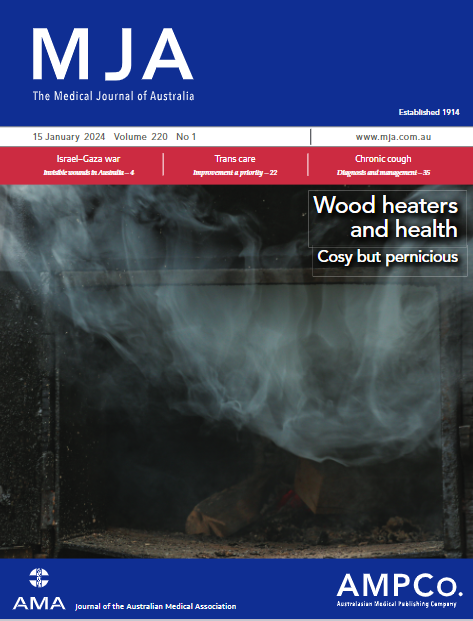Incidence of GLP-1 receptor agonist use by women of reproductive age attending general practices in Australia, 2011–2022: a retrospective open cohort study
Abstract
Objective
To examine longitudinal changes in the initial prescribing of glucagon-like peptide 1 (GLP-1) receptor agonists for women of reproductive age in Australia; to determine whether contraception recommendations are being followed; and to estimate the frequency of pregnancy among women using GLP-1 receptor agonists.
Study design
Retrospective open cohort study; analysis of MedicineInsight general practice data.
Setting, participants
Women aged 18–49 years who visited participating general practices three or more times during the study period (1 January 2011 – 31 July 2022).
Main outcome measures
Age-standardised incidence of initial GLP-1 receptor agonist prescribing, by year and type 2 diabetes status; proportion of women using highly effective contraception at the time of GLP-1 receptor agonist initiation (contraception overlap); age-standardised incidence of pregnancy within six months of the first prescribing of GLP-1 receptor agonists.
Results
Of 1 635 684 women aged 18–49 years, 18 010 (1.1%) were first prescribed GLP-1 receptor agonists during 2011–2022, of whom 3739 (20.8%) had type 2 diabetes. The age-standardised incidence of GLP-1 receptor agonist prescribing for women with type 2 diabetes increased from 13.0 per 1000 women in 2011 to 88.5 per 1000 women in 2022; for women without type 2 diabetes, it increased from 0 to 14.9 per 1000 women. Of the 6293 women first prescribed GLP-1 receptor agonists during 2022, 6954 (90.5%) did not have type 2 diabetes. Contraception overlap with first prescribing of GLP-1 receptor agonists was determined for 3825 women (21.2%). Pregnancies within six months of GLP-1 receptor agonist prescribing were documented for 232 of 10 781 women for whom at least six months of follow-up data were available.
Conclusions
The prescribing of GLP-1 receptor agonists for women of reproductive age is increasing in Australia, and most prescriptions are for women not diagnosed with type 2 diabetes. Fewer than one in four women are using contraception at the time of treatment initiation, and a considerable number are pregnant within six months of the initial prescribing of GLP-1 receptor agonists. Further evidence and guidelines are needed to support the safe and effective use of GLP-1 receptor agonists by women of reproductive age.


 求助内容:
求助内容: 应助结果提醒方式:
应助结果提醒方式:


